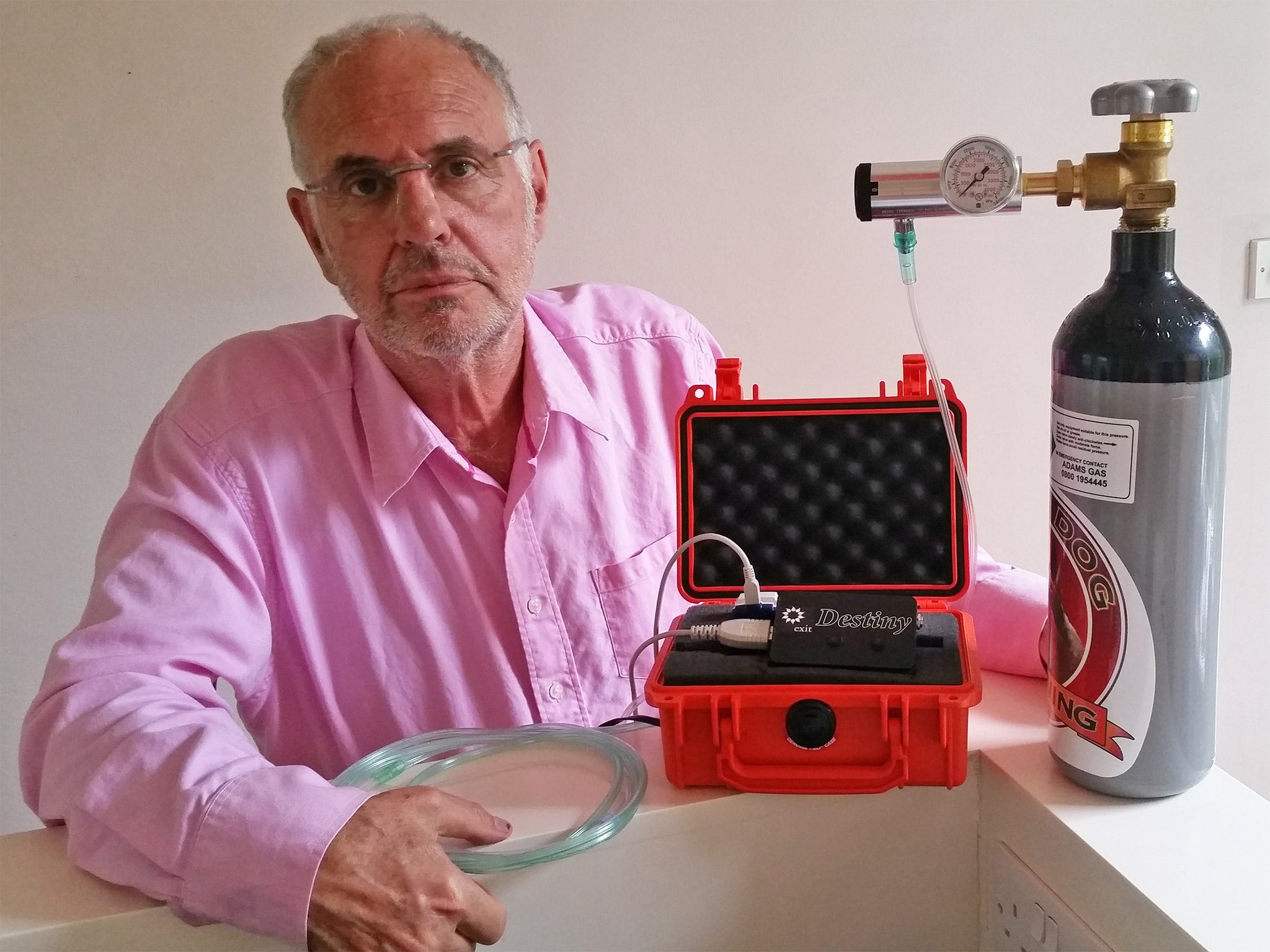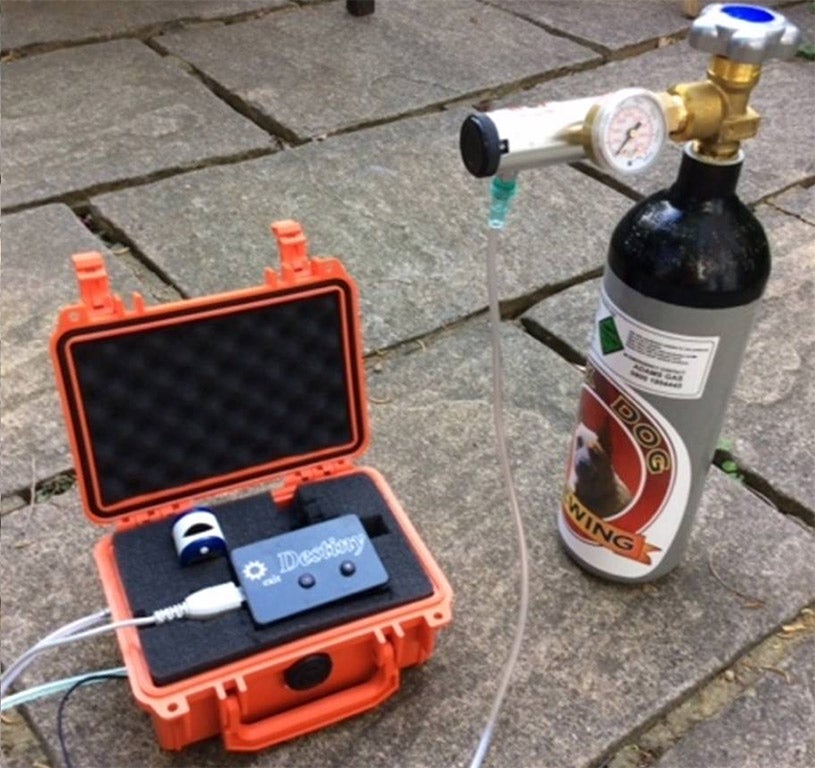Dr Death's Edinburgh Fringe 2015 show will see right-to-die campaigner 'gas' audiences
Exclusive: Philip Nitschke to model how to perform 'a peaceful means of death'

Your support helps us to tell the story
From reproductive rights to climate change to Big Tech, The Independent is on the ground when the story is developing. Whether it's investigating the financials of Elon Musk's pro-Trump PAC or producing our latest documentary, 'The A Word', which shines a light on the American women fighting for reproductive rights, we know how important it is to parse out the facts from the messaging.
At such a critical moment in US history, we need reporters on the ground. Your donation allows us to keep sending journalists to speak to both sides of the story.
The Independent is trusted by Americans across the entire political spectrum. And unlike many other quality news outlets, we choose not to lock Americans out of our reporting and analysis with paywalls. We believe quality journalism should be available to everyone, paid for by those who can afford it.
Your support makes all the difference.Audience members at the Edinburgh Fringe show hosted by the controversial medic known as Dr Death will be ‘gassed’ as they model how “a peaceful and reliable means of death” is carried out.
Right-to-die campaigner Philip Nitschke, 67, will invite people on stage to inhale gas from his updated version of the Deliverance machine that helped end the lives of four terminally people in the 1990s using intravenous drugs. Dr Nitschke said the move to gas made his new Destiny euthanasia machine much easier to use as no special skills, such as inserting an IV tube, are required.
Destiny asks three questions before delivering a lethal gas made up of nine per cent carbon monoxide and 91 per cent nitrogen through either a face mask, or nasal prongs, to the patient wanting to die. Volunteers at next month’s ‘Dicing with Dr Death’ show, the first public appearance of the new machine, will receive 100 per cent nitrogen.

Dr Nitschke said the change followed discussions during development in Michigan with Neal Nicol, the assistant of American euthanasia activist Dr Jack Kevorkian, jailed for his direct role in a case of voluntary euthanasia, who died in 2011.
“Suicide is not a crime in the UK, and assistance is not required to use Destiny, which is perfectly legal,” Dr Nitschke told The Independent. “The gas that provides the peaceful death is not restricted. Neal Nicol was present at the deaths of over 50 people who died inhaling nine per cent monoxide, and in his opinion, this method is as peaceful and effective as the more difficult administration of intravenous drugs.
“The new Destiny euthanasia machine will provide people with a peaceful and reliable means of death. In Edinburgh I will ask for volunteers and point out that nitrogen only will be used, but as part of the machine display everyone will see the volunteer’s cardiac trace projected - the gas can only be switched on if there is a cardiac trace, and switched off as soon as the trace flat-lines.”
Deliverance helped four people die in Australia’s Northern Territory between 1996-7 in accordance with a state law which came into effect in 1996, but that was overturned a few months later. The machine is now on display in the British Science Museum.
Dr Nitschke said the move to a microprocessor replacing the old laptop means that the new machine is much smaller and also has the ability to be used by people who are seriously disabled, such as quadriplegics, or patients seriously disabled by diseases such as motor neurone disease.
Destiny was initially commissioned after discussion with lawyers for Tony Nicklinson, the 58-year-old right-to-die campaigner who died three years ago having suffered from locked-in syndrome.
Dr Nitschke said: “What was wanted was a device that could be activated by eye movement, or speech as Tony had, and required minimal assistance to use. I provided the machine details to a recent gathering in San Francisco, including to Neal Nicol, and have now sent them on to two people in the US and New Zealand making enquires for their consideration. There will certainly be more interest when details about Destiny become better known.”
Dr Nitschke remains in battle with authorities in Australia. He had his medical licence suspended following claims he counselled a depressed man to kill himself, but won his appeal at the Northern Territory Supreme Court earlier this month when it found the emergency suspension of his licence by the Medical Board of Australia (MBA) should not have been upheld by a review tribunal.
However, the MBA has so far refused to reinstate his membership telling Dr Nitschke that he had two weeks to appeal their original decision yet failed to do so.
Dr Nitsche said: “I’m sick of them really. Those two weeks expired well before the Supreme Court hearing on the legality of the decision. They are just using excuses and I’m looking at legal options to deal with it.”
The 3 questions Destiny asks
1. Are you aware that if you go ahead to the last screen and press the “Yes” button, you will be given a lethal gas and die?
2. Are you certain you understand that if you proceed and press the “Yes” button on the next screen that you will die?
3. In 15 seconds you will be given a lethal gas ... press “Yes” to proceed.
Join our commenting forum
Join thought-provoking conversations, follow other Independent readers and see their replies
Comments